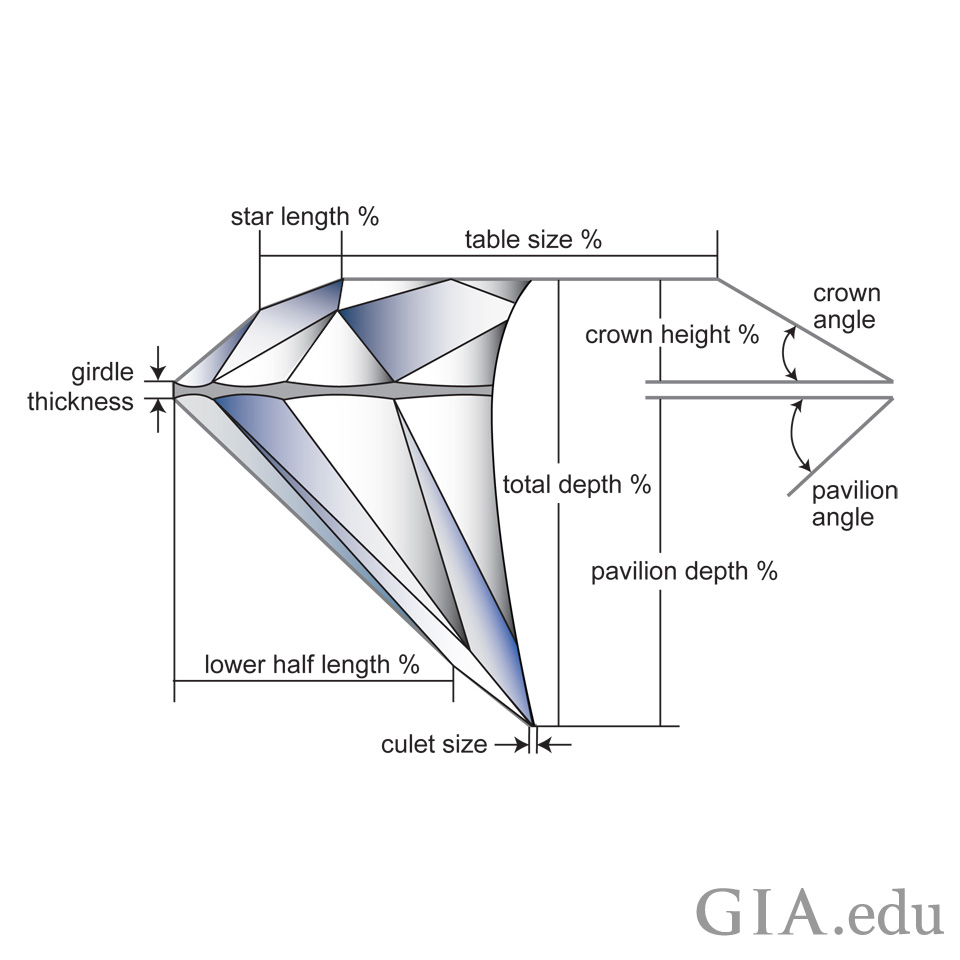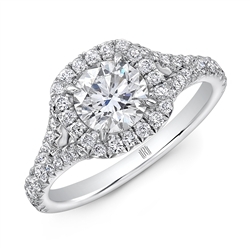Diamond Cut Grading – GIA Diamonds

At Schwanke-Kasten Jewelers in Milwaukee and Whitefish Bay, WI, we carry a full range of GIA certified diamonds for engagement rings. Over the past several months, we have been diving into how the GIA (Gemologists Institute of America) grades diamonds. In essence, GIA determines the quality of a diamond based off of a mixture of “4 C’s”; cut, clarity, color and carat weight. Today we are expanding on how the cut of a diamond affects its grade, diamond cut grading.

Courtesy of GIA.edu
Diamond Cut Grading
When talking about the cut of a diamond, we are referring to the physical shape of a diamond. The GIA will break down diamond cuts into two major categories, Brilliant Cuts and Fancy Cuts.
Brilliant Cuts
Jewelers will refer to brilliant cuts as a round brilliant diamond. Containing specifically 58 facets, this cut is generally the safest in terms of “sale-ability”, insurability and flexibility (when it comes to mountings). These facets and the relative proportions, although not agreed upon universally, are imperative to displaying the diamond’s brilliance, scintillation and fire along with its overall structure (symmetry, polish quality, weight to diameter and girdle thickness).
Fancy Cuts
Fancy cuts typically arise due to odd shaped rough diamonds or leftover rough diamond after a round brilliant has been cut from it. Furthermore, fancy cuts are more likely to appear on colored diamonds. The GIA will further divide fancy cut diamonds into three more categories:
- Modified Brilliant – displaying a similarity of light play like a brilliant cut, modified brilliant cuts come in a wide array of styles. Marquise, heart, trillion, oval and pear cuts are the typical styles.
- Step cuts – typically have a square or rectangular outline using step-cuts (parallel cuts to the girdle). However, despite the unique look, step cuts typically lose the brightness and fire that is associated with diamonds. Diamond cutters usually use step cuts to make emerald and square cut diamonds.
- Mixed Cuts – Lately, diamond cutters are combining modified brilliant and step cuts to make a youthful cut diamond. Princess cuts and Radiant cuts are the most common styles.
Currently, the GIA only has a diamond cut grading standard for brilliant cut diamonds. In which, the GIA grades diamond cuts into 5 different categories: Excellent, Very Good, Good, Fair and Poor. Trained gemologist grade the diamond by a number of factors:
- Measurement – minimum diameter (mm) to maximum diameter to depth for round diamonds. The carat weight is also one of the factors in determining this grade
- Polish Quality – absence of surface blemishes
- Symmetry – exactness of outline to its shape, placement and alignment of its facets as it relates to its 58 facets.
So, if you are searching for a traditional round brilliant diamond, the cut grade will give you a lot of information regarding the quality of the diamond. Stop by Schwanke-Kasten Jewelers to see our full range of GIA certified diamond engagement rings!



